Dec 19, 2015 | commentary, policy, US Mint
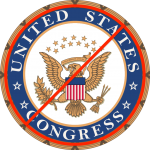 The day after announcing the end to mail order purchasing, the U.S. Mint issued a statement saying, “The United States Mint is currently analyzing a policy change to discontinue the distribution of mail order forms in 2016.”
The day after announcing the end to mail order purchasing, the U.S. Mint issued a statement saying, “The United States Mint is currently analyzing a policy change to discontinue the distribution of mail order forms in 2016.”
Product brochures that will be mailed in January will not contain a mail order form, probably because the production has been completed and would be too expensive to change at this time.
Word on the street says that a few people complained to their member of congress who then contacted the U.S. Mint. Although there are rumors as to the congress person that made contact with Treasury officials, there are no reports confirming the identity of the suspect.
Once again, congress proves that you cannot run the government like a business because in a business, the Board of Directors can demonstrate a modicum of common sense.
Dec 15, 2015 | coins, news, US Mint
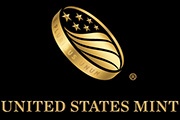 With the growing importance of electronic commerce especially for new products that sell out online with greater efficiency than even telephone order, the U.S. Mint has announced that it will be discontinuing all mail order processing at the end of the current fiscal year, on September 30, 2016.
With the growing importance of electronic commerce especially for new products that sell out online with greater efficiency than even telephone order, the U.S. Mint has announced that it will be discontinuing all mail order processing at the end of the current fiscal year, on September 30, 2016.
According to the statement released by the U.S. Mint, “The reality of the digital environment means that paper orders placed through the mail are increasingly not accepted as inventory is depleted quickly through online and telephone channels in real time. This is especially true for high-demand products with limited mintages. By eliminating mail orders and encouraging all customers to shop online or by phone, the Mint will be offering more ordering consistency and eliminating those hard copy orders that take longer to receive, process and fulfill.”
While existing order forms will be accepted until the deadline, catalogs and other U.S. Mint advertising material will no longer include paper order forms. Order forms received after September 30, 2016 will be returned with instructions to place the order using the online catalog or by calling (800) USA-MINT (872-6468).
There will be some people upset by this move, but considering the direction of online retail services and the reduction in cost to serve the broader market, the few people that might feel they are being excluded will be inconsequential. Dealers and the secondary market will pick up the business the U.S. Mint is expected to lose.
As with any change, the U.S. Mint will not make everyone happy. Some may point out the previous failures in their online ordering process while others might even say that telephone ordering should also be reduced without realizing that the U.S. Mint’s customer service representatives use a similar version of the website to place an order.
For those who use smartphones, the U.S. Mint does have an app that can be used to place orders. I have used the app (and should write a review) but it might be better to ignore the app and directly use the website.
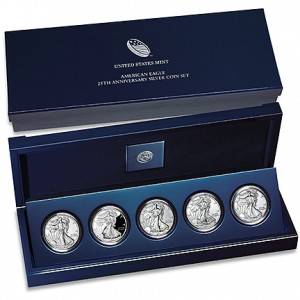
2011 American Silver Eagle 25th Anniversary Set
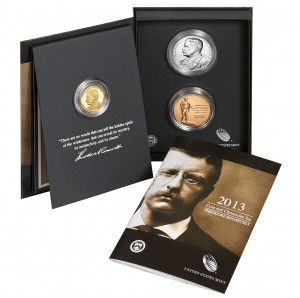
2013 Theodore Roosevelt Coin and Chronicles Set
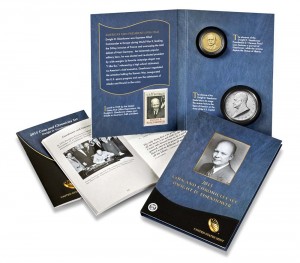
2015 Dwight D. Eisenhower Coin & Chronicles Set
Dec 5, 2015 | coins, Eagles, legislative, silver, US Mint
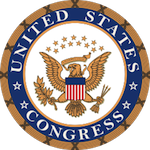 I know that there is little the U.S. Mint can do without congress’s permission, but sometimes sifting through what congress is doing can be tiresome. There is so much good that congress can do but the political in-fighting is so insidious that all one can do is shake their head in disgust. At least there is one interesting item to report:
I know that there is little the U.S. Mint can do without congress’s permission, but sometimes sifting through what congress is doing can be tiresome. There is so much good that congress can do but the political in-fighting is so insidious that all one can do is shake their head in disgust. At least there is one interesting item to report:
H.R. 22: Developing a Reliable and Innovative Vision for the Economy Act
Sponsor: Sen. Rodney Davis (R-IL)
• Introduced: January 6, 2015
• Passed House of Representatives on January 6, 2015
• Passed Senate with amendments on July 30, 2015
• Conference report presented to Senate on November 5, 2015
• Conference committee convened November 18, 2015
• Of significance to numismatics:
- SEC. 73002. AMERICAN EAGLE SILVER BULLION 30TH ANNIVERSARY: Proof and uncirculated versions of ASE coins during 2016 shall have a smooth edge incused with a designation that notes the 30th anniversary of the first issue of coins.
Track this bill at https://www.govtrack.us/congress/bills/114/hr22
In other words, congress is mandating a 30th Anniversary American Silver Eagle set. I wonder if it will match the 25th Anniversary set?
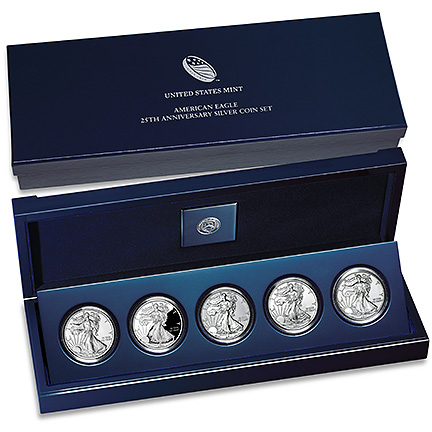
2011 American Silver Eagle 25th Anniversary Set
Image of American Eagle set courtesy of the U.S. Mint
Nov 24, 2015 | bullion, Eagles, gold, silver, US Mint
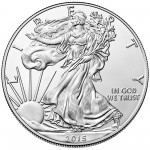 As we wind down to the end of the year, the U.S. Mint has been announcing their end of the year production availability for 2015 American Eagle bullion coins. Starting with the announcement on November 14, 2015 that the quarter ounce $10 gold American Eagle bullion coin has sold out and no more will be produced. For 2015, the U.S. Mint has sold 39,500 ounces of quarter ounce American Eagle bullion coin representing 158,000 coins. This represents a 33-percent increase from 2014.
As we wind down to the end of the year, the U.S. Mint has been announcing their end of the year production availability for 2015 American Eagle bullion coins. Starting with the announcement on November 14, 2015 that the quarter ounce $10 gold American Eagle bullion coin has sold out and no more will be produced. For 2015, the U.S. Mint has sold 39,500 ounces of quarter ounce American Eagle bullion coin representing 158,000 coins. This represents a 33-percent increase from 2014.
A few days later on November 18, the U.S. Mint announced that the one-tenth ounce American Eagle gold bullion coin has been sold out. For the year, the U.S. Mint produced 980,000 of the one-tenth ounce gold American Eagle proof coins representing 98,000 ounces of gold. This year’s production is a bit more than 73-percent increase over the 565,000 coins struck in 2014.
UPDATE: In a 4:35 PM note (24-Nov-15), the U.S. Mint has announced that the one-ounce gold American Eagle bullion coin has sold out! Orders for 2016 bullion coins will begin on January 11, 2016.
The day after announcing that they will be restricting the production of the American Silver Eagle bullion coins to 1 million coins per week, the U.S. Mint announced that they will continue to produce the coins through the week of December 7, 2015. They anticipate that this will cover their full weekly allocation through Monday, December 14, 2015.
With the price of silver dropping, the U.S. Mint has produced 42,929,500 American Silver Eagle bullion coins to this point. Considering the allocation of 1 million coins per week with four weeks left of sales, the final total of silver coins should be between 46-47 million coins. This would be an increase over last year’s record of 44,006,000.
American Silver Eagle bullion coin image courtesy of the U.S. Mint.
Nov 24, 2015 | coins, commemorative, commentary, legislative, policy, US Mint
While reviewing my notes I noticed that I had this draft in my queue. Although drafted in July, I think the topic is still relevant.
In 2009, I wrote a six-part series “Reforming America’s Currency” out of frustration with how behind the United States is in its currency production process (not economic policy) as compared with the rest of the world. After all, the U.S. Mint and the Bureau of Engraving and Printing are the largest money manufacturers in the world. In Part 4, I wrote that the “first reform in commemorative coinage would be that no commemorative would be struck for the sole purpose of raising money for any organization. Regardless of how worthy the organization may be, the association of the commemorative with fundraising taints the process.”
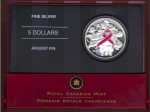
2006 Canada silver $5 Breast Cancer Commemorative Coin
In an astounding partisan move, some members of congress have chosen to display their political umbrage to try to derail a commemorative coin that has bipartisan support.
If you are not aware, the original version of H.R. 2722 would have given the proceeds to the Susan G. Komen for the Cure and the Breast Cancer Research Foundation. The argument was whether money raised by the commemorative should go to Komen. As a not-for-profit charitable corporation, Komen supports education and research to fight breast cancer. The organization, founded in 1983, has been one of the more successful organizations in education and providing research funds in the fight against breast cancer.
Komen is not without controversy. Most have been within the last 10 years when the organization has grown to such size and scope that some feel it may be more corporate driven than focused on its original mission. One of its controversies is its association with Planned Parenthood. Komen, who gives grants to organization for women cancer screenings, had been proving grants to Planned Parenthood earmarked for cancer screenings. Since Planned Parenthood has also had its share of controversies, social conservatives balked at the association.
More recently, Planned Parenthood has been accused of unethical practices regarding their medical-related practices. A video surfaced that claims someone at Planned Parenthood would be selling fetal tissue following abortions. It was a hidden camera video whose contents have not been verified. Although the video has some disturbing conversations, it is unknown whether this is an isolated incident or a policy followed by some.
Because of the politics surrounding the abortion issue, the policies of Planned Parenthood, and Komen’s support of Planned Parenthood’s cancer screening programs, Komen was open to attack by right wing demagogues looking to score political points rather by using the concept of guilt by association rather than rational thinking.
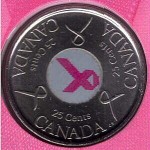
Canada’s non-controversial 2007 25-cent Breast Cancer circulating coin
Komen may have its controversies but the debate on this issue is beyond the pale. Their mission is for education and cancer research. Their mission should be as non-partisan as anything in this country. Cancer does not discriminate. Cancer will attack anyone at any time for any reason regardless of affiliation outside of being a sentient being.
To bring any other issue into the discussion, regardless of where you fall on the political spectrum, shows congress’s immaturity and that the basic function of raising money using commemorative coins should be discontinued immediately.
Some will be upset over my discussion of politics, but politics are part of the coin making process since the U.S. Mint cannot do much without permission. I also both sides of the issue, but for this debate, I do not care. When you have to go three-degrees of separation to dig up an issue in an unrelated political debate, it gets frustrating. It is yet another illustrations as to why I am against using commemorative coins to raise money for any cause regardless of how I feel about the cause—and I have personal reasons for being in favor of cancer research and education. This debate should have NEVER devolved into a discussion about abortion. The fact that it did stoop to those depths proves that congress needs to get out of the commemorative coin business. It will be one less area they can mess up.
Nov 18, 2015 | BEP, cents, coins, commentary, currency, dollar, economy, Federal Reserve, US Mint
 Over the summer, a Harris Poll was conducted to understand how Americans feel about abolishing the one-cent coin and the paper dollar note. Even though there are pundits calling for these changes and even the end of physical currency, Harris found that those wanting to keep the lowly one-cent coin continue to hold the majority opinion.
Over the summer, a Harris Poll was conducted to understand how Americans feel about abolishing the one-cent coin and the paper dollar note. Even though there are pundits calling for these changes and even the end of physical currency, Harris found that those wanting to keep the lowly one-cent coin continue to hold the majority opinion.

Series 1935 $1 FRN Reverse Early Design
Every so often an article is written, usually by the political elite, about ending lower denomination coins for many reasons including the high cost of mintage or the inconvenience of their existence. Others point to rise of non-cash transactions and the rise of digitally created currencies as the future.
Those of us who work in areas outside the larger commercial world has experience with a cash economy that is not tied to economic status. One of those is the numismatics industry. While many dealers will take credit cards, and will pass along the fees along to the customer, many dealers have said that most of their off-line business is a cash-based business. While larger purchases are done using checks, most will leave shows with more hard currency than other types of payments.

1909-VDB Lincoln Cent
There are people who are leery of using credit and debit cards for every transaction. We use cash to limit our exposure. In this connected world, the credit and debit card leaves a digital breadcrumb that is available to be hacked. I cannot tell you how many times I watched people in local convenience stores punch in their codes in a matter I could see them and then leave their receipts behind. This could be used to steal your money and your debit cards are not covered the same as credit cards. But the public does not see this.
A week does not go by without a report of the hacking of personal information that should not be made public. Unfortunately, it is getting to be like rain on the hot-tin roof, after a while the sound blends into the background.
According to the Federal Reserve, there was approximately $1.39 trillion in circulation as of September 30, 2015, of which $1.34 trillion was in Federal Reserve notes. That represents a lot of money that would have to be accounted for if we were to go into a cashless society. It would take a significant effort that would not make for good public policy.
The calls to make changes to change are beginning to drone on as background noise like rain on a hot-tin roof.
Nov 11, 2015 | celebration, medals, US Mint
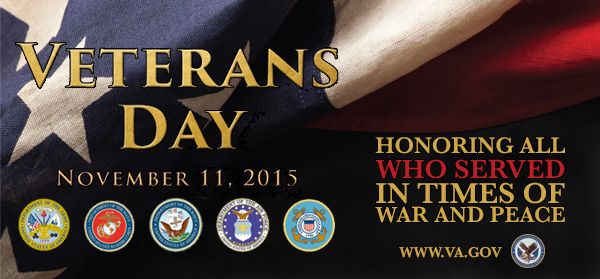
Our veterans left everything they knew and loved and served with exemplary dedication and courage so we could all know a safer America and a more just world. They have been tested in ways the rest of us may never fully understand, and it is our duty to fulfill our sacred obligation to our veterans and their families. On Veterans Day, and every day, let us show them the extraordinary gratitude they so rightly deserve, and let us recommit to pledging our full support for them in all they do.
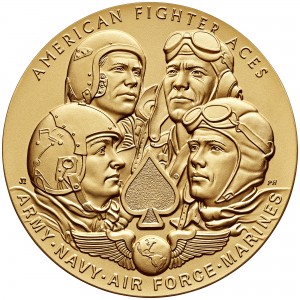
2015 American Fighter Aces Bronze Medal
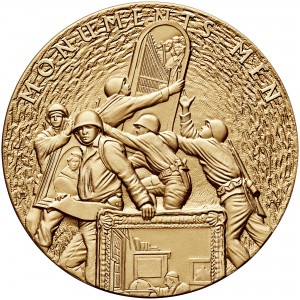
2015 Monuments Men Bronze Medal
Nov 5, 2015 | coins, commemorative, legislative, policy, US Mint
 Those who follow politics has watched the machinations that the House of Representatives went through before picking Rep. Paul Ryan (R-WI) as the 54th Speaker of the House of Representatives. During that time, not much else happened outside of the requisite budget battles. But there was one bill introduced that may be of interest:
Those who follow politics has watched the machinations that the House of Representatives went through before picking Rep. Paul Ryan (R-WI) as the 54th Speaker of the House of Representatives. During that time, not much else happened outside of the requisite budget battles. But there was one bill introduced that may be of interest:
S. 2185: Breast Cancer Awareness Commemorative Coin Act
Sponsor: Sen. Heidi Heitkamp (D-ND)
• Introduced: October 20, 2015
• Referred to the Senate Banking, Housing, and Urban Affairs Committee
• Summary:
- 2018 Commemorative program
- 50,000 $5 “pink gold” coins with $35 surcharge
- 400,000 silver $1 coins with $10 surcharge
- 750,000 clad half-dollars with $5 surcharge
- Surcharge paid to Breast Cancer Research Foundation for the purpose of furthering breast cancer research
Track this bill at https://www.govtrack.us/congress/bills/114/s2185

iPhone 6S in Rose Gold
If you think that this bill looks very much like H.R. 2722, you are a very perceptive person. The only difference between this bill and H.R. 2722 is the specification to use “pink gold.” Pink gold is actually “rose gold,” which has a pinkish hue. For the record, Apple’s new iPhone 6S comes in rose gold that looks more pink that “rose.”
Speaking of budget bills, one of those bills, S. 2132, has been reported out of committee and waiting for a Senate vote. What is significant about the bill is that it outlines how much money the U.S. Mint can withdraw from the Public Enterprise Fund, the account where the seigniorage from all coin sales is deposited. The bill states:
United States Mint – United States Mint Public Enterprise Fund
Pursuant to section 5136 of title 31, United States Code, the United States Mint is provided funding through the United States Mint Public Enterprise Fund for costs associated with the production of circulating coins, numismatic coins, and protective services, including both operating expenses and capital investments: Provided, That the aggregate amount of new liabilities and obligations incurred during fiscal year 2016 under such section 5136 for circulating coinage and protective service capital investments of the United States Mint shall not exceed $20,000,000.
iPhone image courtesy of Apple.
Oct 7, 2015 | coins, dollar, US Mint
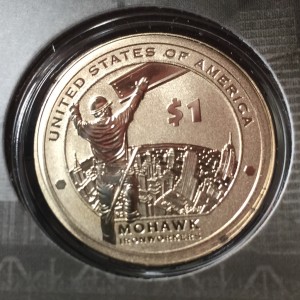
2015-W Native American Dollar Reverse celebrating the Mohawk Iron Workers
Through 2008, the reverse featured a soaring eagle by U.S. Mint sculptor-engraver Thomas D. Rogers. Starting in 2009, the reverse was changed as part of the Native American $1 Coin Act (Pub.L. 100-82) signed into law by President George W. Bush. Under the law, the reverse of the one dollar coin “shall depict images celebrating the important contributions made by Indian tribes and individual Native Americans to the development of the United States and the history of the United States.”
The act also moved the E PLURIBUS UNUM and the date to the edge of the coin.
While dollar coins have not been popular and even have undergone unneccesary scorn, the images and artwork going into these coins are amongst the best produced by the U.S. Mint. In 2009, the subject was the Three Sisters of Agriculture depicting a Native American woman planting seeds in a field populated with corn, beans and squash. It shows how the Native Americans understood the concept of crop rotation long before the Europeans did. But the design by U.S. Mint sculptor-engraver Norman E. Nemeth is nothing less than fine art on a coin.
For 2015, the reverse commemorates the Kahnawake and Akwesane Mohawk ironworkers who contributed to the building of New York City skyscrapers. The deisgn by artist Ronald D. Sanders and engraved by U.S. Mint sculptor-engraver Phoebe Hemphill is nothing less than fine art touting the talents of both artists.
This year, the U.S. Mint issued the American $1 Coin and Currency Set containing a $1 Federal Reserve Note from the Federal Reserve Bank of New York with a serial number beginning with “911” and an Enhanced Uncirculated 2015-W Native American dollar coin with the Mohawk Ironworker’s reverse. Originally, I bought this set for the dollar note because of its tie to New York but the enhanced uncirculated dollar coin makes this a fantastic collectible.
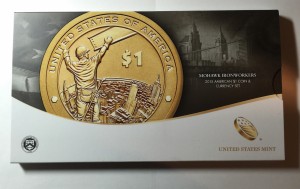
Outer packaging of the 2015 American $1 Coin and Currency Set
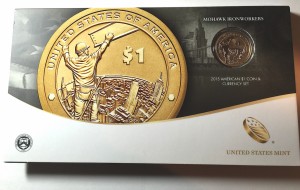
Front of the folder for the American $1 Coin and Currency Set
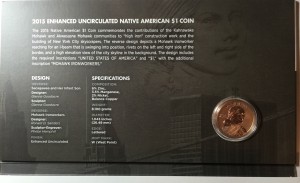
Back of the folder for the 2015 American $1 Coin and Currency Set
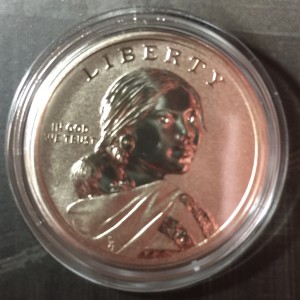
Obverse of the 2015-W Enhanced Uncirculated Native American Dollar
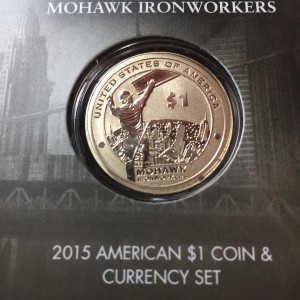
Reverse of the 2015-W Enhanced Uncirculated Native American Dollar
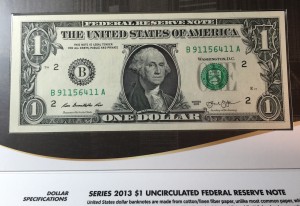
Series 2013 Uncirculated $1 Federal Reserve Note from the Federal Reserve Bank of New York
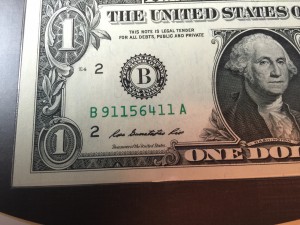
Close up of the Series 2013 $1 FRN. Note that the serial number begins with “911”
There are some great designs that the U.S. Mint has issued as “Enhanced Uncirculated.” To add the textures to the coins, the dies are polished and enhanced with lasers and wire brushes. In my opinion, these are better than the colored coins because they are part of the design and not the printing of pictures on the coin. I will have more thoughts on the enhanced uncirculated coins at another time.
Sep 29, 2015 | CCAC, coins, commemorative, job, US Mint
 Are you a numismatist with training, education or experience? Do you want to be part of the decisions making process in the design of new coins and medals? Can you do this with no compensation, minimal reimbursement, and make decisions with people looking and criticizing your decisions? Then do I have a job for you!
Are you a numismatist with training, education or experience? Do you want to be part of the decisions making process in the design of new coins and medals? Can you do this with no compensation, minimal reimbursement, and make decisions with people looking and criticizing your decisions? Then do I have a job for you!
The Citizens Coinage Advisory Committee is looking for a member who is specially qualified in numismatics to fill one of its 11 seats. As one of the 11 members, you will provide one of the many inputs on themes and designs for circulating and bullion coinage, commemorative coins, Congressional Gold Medals, and other medals produced by the U.S. Mint. The other inputs will be the Commission of Fine Arts and the special interest organizations that has the ear of the decision makers including whomever is running the U.S. Mint and the Secretary of the Treasury.
Appointments to the CCAC are for four-year term and are classified as Special Government Employees who are subject to conflict of interest laws and ethics regulations. At the end of the four-year term you can be re-appointed as long as your application is approved.
If you want to be considered to be part of this sausage making process, should submit a resume, along with a cover letter, detailing specific educational credentials, skills, talents, and experience. Applications may be submitted by email to info@ccac.gov, by fax to 202-756-6525, or by snail mail to: United States Mint, 801 9th Street NW, Washington, DC 20220, Attn: Greg Weinman. Submissions must be postmarked no later than Friday, October 9, 2015.
 The day after announcing the end to mail order purchasing, the U.S. Mint issued a statement saying, “The United States Mint is currently analyzing a policy change to discontinue the distribution of mail order forms in 2016.”
The day after announcing the end to mail order purchasing, the U.S. Mint issued a statement saying, “The United States Mint is currently analyzing a policy change to discontinue the distribution of mail order forms in 2016.”



 I know that there is little the
I know that there is little the 



 Over the summer, a Harris Poll was conducted to understand how Americans feel about abolishing the one-cent coin and the paper dollar note. Even though there are pundits calling for these changes and even the end of physical currency, Harris found that those wanting to keep the lowly one-cent coin continue to hold the majority opinion.
Over the summer, a Harris Poll was conducted to understand how Americans feel about abolishing the one-cent coin and the paper dollar note. Even though there are pundits calling for these changes and even the end of physical currency, Harris found that those wanting to keep the lowly one-cent coin continue to hold the majority opinion.













